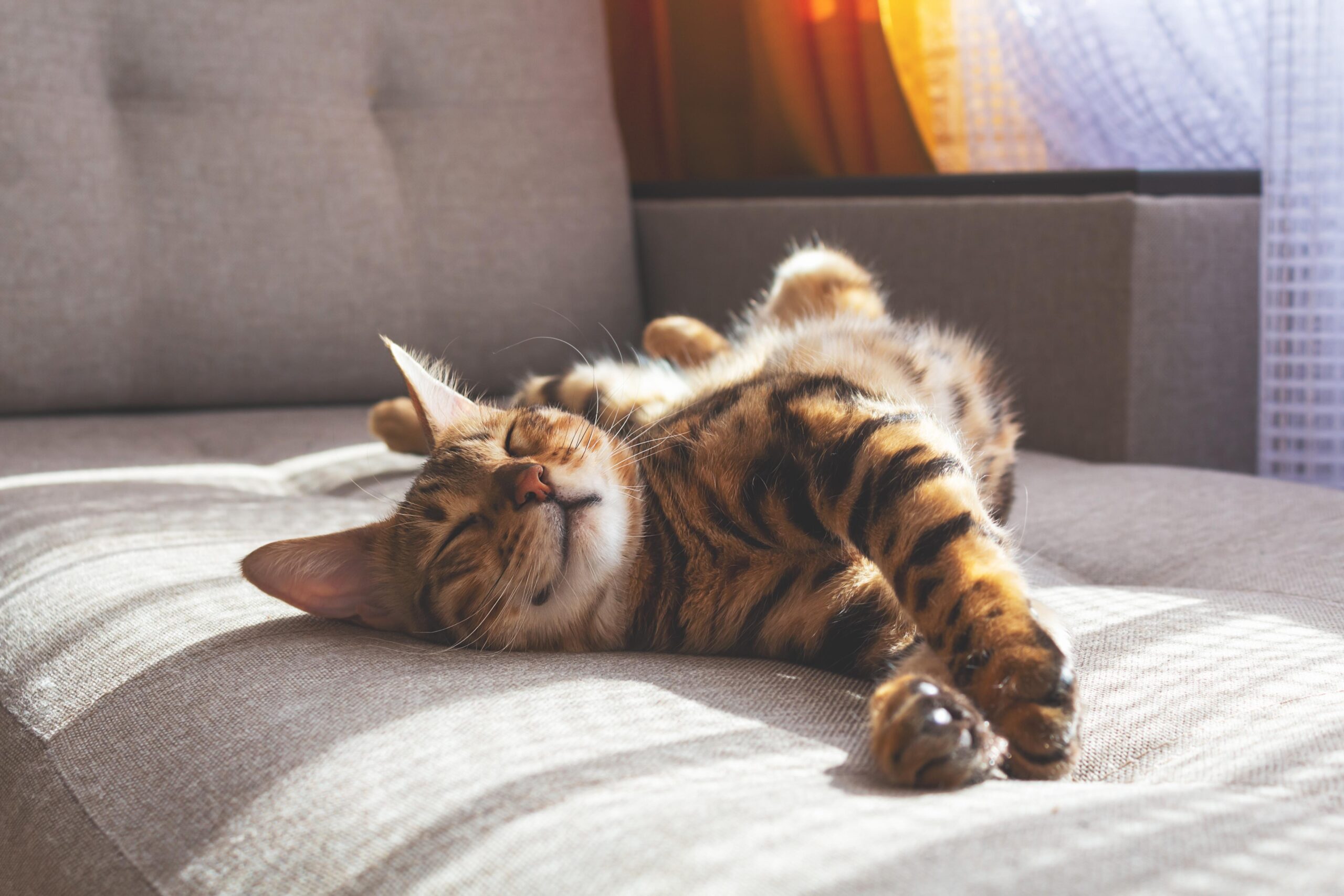Kitten training
Kittens are instinctive and learn a lot from their mum. Whether this be learning to use the litter tray or learning to explore. Kitten training is essential to ensure these things are done safely and correctly.
Litter training
If you have a new kitten and they are not using a litter tray yet, do not worry! There are ways to train your kitten to use one! Kittens are still learning, and accidents happen, but generally cats are very hygienic and pick it up easily with the right encouragement. You must be consistent, and patient and they will eventually learn where they need to go to eliminate waste.
What do you need?
Depending on the size of the kitten you will need a plastic accessible tray. If you have other cats in the house, it is important to have 1 litter tray per cat plus 1 to prevent any conflict. There are several different types of substrates that you can use, so be guided by what kind your cat finds comfortable. Make sure it is in a private area where they will not be disturbed and away from their food and water bowls.
How to train.
Cats and kittens are hygienic animals, and they will often learn from their mum that a litter tray needs to be used. However, in a new environment they may not realise where they need to go. To train your kitten it is advised to place them in the litter tray after meals and after drinking as well as after sleeping. Try not to watch them go as it can make them feel uncomfortable. If they go, then reward them when they step out. You may notice them sniffing around an area looking like they want to go, then pick them up and place them in the litter tray. If they do go somewhere undesirable, do not punish them for it, just clean it up with a mix of biological washing powder and water to discourage them from going there again.
If your kitten still won't use the litter tray there may be a few reasons why. Check that it is big enough for them. They must be able to turn around easily. Check its clean enough. You must clean them out regularly with a pet safe detergent or disinfectant. Using a cleaner too strong in smell may deter your kitten from using the tray. Is it easily accessible and in a private enough environment? This means ensuring the tray is in a quiet area without any other animals around. Lastly, they may not like the type of litter, so try changing it.
If your kitten has been using the tray but suddenly regresses, it is important to contact your veterinary care provider to rule out any underlying problems.
Kitten proofing your home
Kittens love to explore and get into a lot of mischief. It's important to ensure your home is safe and hazard free! Keep doors closed! This means cupboards, toilets, washing machines, tumble dryers and dishwashers. Make sure balconies are fenced off and windows closed to prevent any escapes at a height!
Keep things like strings and elastic bands safely stored away to prevent your kitten from swallowing them.
There are many things around the house that are toxic, including a lot of house plants, so check which ones you have and if not safe, remove. These include, Lillies, foxgloves and tulips (to name a few!). Some cleaning products are toxic as well as things like rodent poison, anti-freeze and some human medications.
Some foods such as onion, garlic and chocolate (again to name a few) are toxic to cats. Ensure they are kept away and if you have any concerns that your kitten has eaten or contacted something that could be dangerous call your veterinary care provider immediately.
Letting your kitten outside
If you want your kitten to have access to outdoors there are a few things to consider.
A young kitten may not have the required skills to navigate the dangers of outdoors. Supervise them until around 6 months of age.
Preventative care
Is your cat vaccinated and microchipped? It is now a legal requirement for all cats to be microchipped. This means if they stray, they can be traced back to their registered keeper. Vaccines are important to protect them against common feline viruses.
It is also advisable not to let your cat out until they are neutered. This prevents unwanted pregnancies and straying.
Home environment
If you want your cat to have access to the outdoors without the dangers, you could cat proof your garden. This would keep them in and keep other animals out.
When you are ready to start letting them out here are a few tips to introduce them to the outside world. Try and train your kitten to come when its name is called. Positively reinforce with treats, so when they go out, they come back when their name is called.
Let them out just before they are due to have a meal. Stand close to them and let them out for short times to begin with, and feed when they come home. Gradually increase the amount of time they spend outside. Always reward them with treats or play when they come home. In general, it's safer to let them out during the day. Letting them out at night comes with its own risks and your kitten may become disoriented.
If your kitten accidentally gets outside unsupervised it's important to remain calm. Check areas where they may be hiding to start with, this may be around the house or in the garden - in sheds or under decking for example. Calmly call them and shake toys or their favourite treats. Place a familiar scent such as a blanket or litter tray outside your house to guide them back.
Indoor only kittens
If your kitten is going to be indoor only, it's important to enhance their environment to prevent stress and other behavioural issues. We need to ensure they can exhibit normal feline behaviours in the house. This includes lots of opportunities for hunting play. Always ensure they have something to eat after to prevent frustration.
In the wild cats would have their food and water sources separate, so incorporate that into the house. Ensure they have lots of opportunity to jump up high and observe, and make sure they have areas they can retreat to in peace. You must have scratching posts where they can stretch vertically and horizontally, otherwise they may use your furniture!
Collars
There are many reasons why you may want your kitten to wear a collar, whether it be for identification, to reduce hunting, or to increase visibility. If you want them to wear one, it’s best to get them used to it as a kitten. Make sure it’s a safe collar that will snap if it gets caught, ensure it's not too tight around the neck and that cannot get their jaw or legs caught in it. Not all cats like to wear a collar and ones with bells can be annoying for them. Be guided by your kitten’s response.
Kittens mostly rely on instinct and guidance from their mother in the early weeks of their life, but it is important to continue training them in your home to keep them safe and happy. Whether it be through litter training or introducing to them to new experiences. By understanding what we as owners can do to aid this, we can keep them safe and healthy. However, if you do ever have any concerns for your pet's health, please do not hesitate to contact your veterinary care provider.





